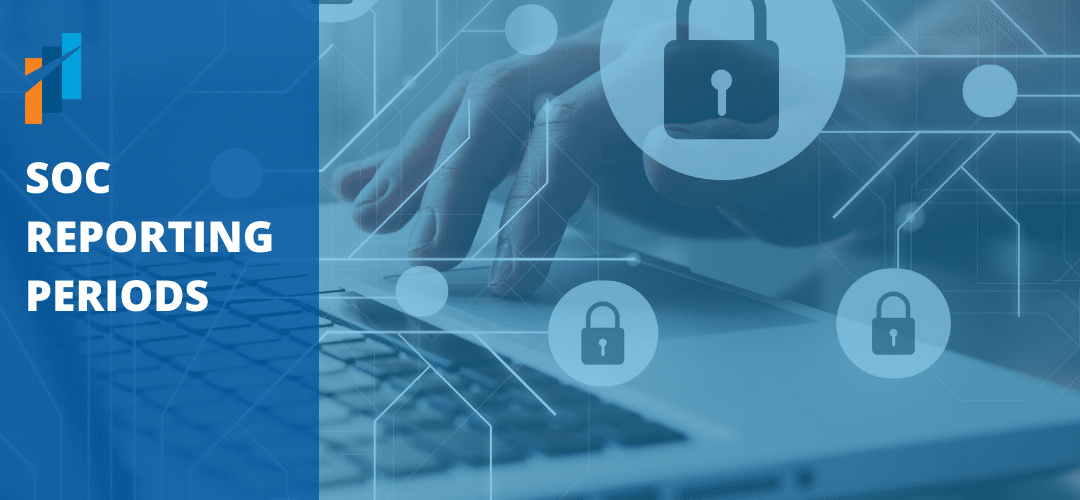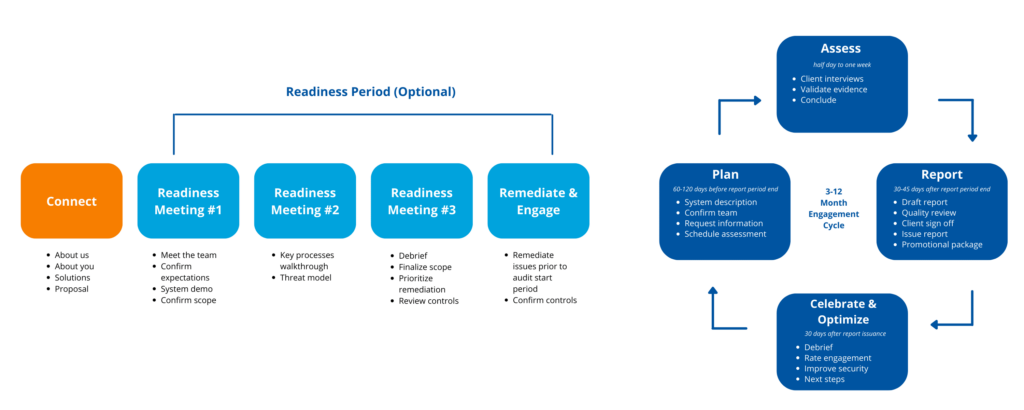How Long Are SOC Reporting Periods? Here’s What to Expect

Today, companies face an unprecedented amount of security challenges, which is why the need for a System and Organization Controls (SOC) report is more important than ever. A SOC report verifies your organization is following best practices related to protecting your consumer’s data. However, the time frame needed for these assessments varies depending on your organization’s needs.
While getting started can feel daunting, BARR Advisory is here to break down what to expect during the SOC reporting period.
What Is a SOC Report, and Why Does My Organization Need One?
A SOC report provides an audit-based opinion on the effectiveness of your service organization’s controls. BARR currently offers four types of SOC examinations, SOC 1, SOC 2, SOC 3, and SOC for Cybersecurity. These reports help differentiate you by increasing transparency and building trust with internal and external stakeholders.
In addition, you’ll gain:
- Less need for frequent audits, resulting in decreased cost for your organization
- Improved risk management and control
- Satisfaction of audit requirements
- Ability to promote internal operational efficiency
What Does the Auditing Process Look Like at BARR?
BARR practices a three-phase auditing process during SOC examinations:
- Connect
-
- We start by connecting on a 30-minute call to determine your needs.
- BARR will send a proposal within one day to confirm our understanding.
- Readiness
-
- Readiness Meeting #1: You will meet your BARR engagement manager, share your system demo, and confirm scope and expectations.
- Readiness Meeting #2+: In this 2+ hour meeting, we will review your key processes such as change management, access management, and vulnerability management.
- Readiness Meeting #3: A debrief meeting to confirm the three readiness deliverables.
- Remediate & Engage: You will correct your gaps prior to starting the audit period. An engagement letter with the agreed audit period is signed.
- Examination Engagement
-
- Plan: A kickoff call is scheduled with you to confirm we are on the same page with the scope, timelines, deliverables, and personnel needed for the assessment.
- Assess: Walkthrough duration is dependent on your environment complexity and size; however, four hours is the typical time commitment.
- Report: BARR will provide a draft report no later than 30 days after the period ends.
- Celebrate & Optimize: BARR will provide a promotional package and schedule a debrief to review improvement opportunities for your security program, rate the engagement, and plan your next engagement.

BARR Advisory SOC Examination Proven Process
How Long Does it Take to Complete a SOC Examination?
There are two types of reports for most SOC examinations, Type I and Type II. When working with BARR, you determine the type of report for your organization after the readiness phase. Each decision depends on your organization’s current goals and practices, and most importantly, what your consumers want to see.
-
Type I reports may be performed right away if your organization has your controls in place and documented. These reports offer a point-in-time service, testing your design on a specific date.
-
Type II reports are generally audited over a 3 to12 month period. These reports reflect your organization’s operating effectiveness during the course of a review period and provide a more detailed assessment of your controls.
Some organizations start with a Type I report, which eventually leads to a Type II, however, that isn’t always necessary. If you have the time and specific needs, going straight for the Type II report can be the most effective route.
For each report, you also determine which assessment works best for your organization. Here is some information about usage and scope of BARR’s SOC examinations:
-
SOC 1 is relevant to service organizations that perform or support their consumer’s financial reporting transactions. This is the most basic report, taking the least amount of time. Organizations that should consider a SOC 1 report include Cloud ERP service providers, financial services, payroll processing, healthcare claims processing, and data center colocation.
-
SOC 2 is a report on controls at a service organization relevant to security, availability, processing integrity, confidentiality, or privacy. Organizations that should consider a SOC 2 report include Cloud Service Providers (e.g., SaaS, IaaS, PaaS), enterprise systems housing third-party data, and IT systems management.
-
SOC 3 reports are shorter than the SOC 2. The benefit of this shorter report is there are no restrictions on report distribution. If your organization wants to communicate that your controls are properly designed, implemented and operating effectively, but do not want to reveal the details of controls, then the SOC 3 report may be right for you.
-
SOC for Cybersecurity is more specific in providing organizations with objective assurance that the appropriate systems, processes, and controls exist to manage a cyberattack. A SOC for Cybersecurity examination may be performed for any type of organization, regardless of size or industry. This may include lenders, investors, analysts, insurance providers, and regulators.
At BARR, we work with you through each phase of the SOC examination process. While the duration of your audit may vary, we provide you with efficient services so you can continue to ensure your consumer’s trust.
Interested in more information about our System and Organization Controls services? Contact us today for a free consultation.